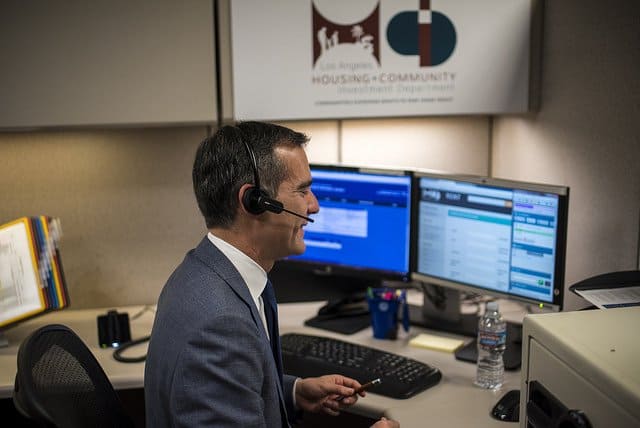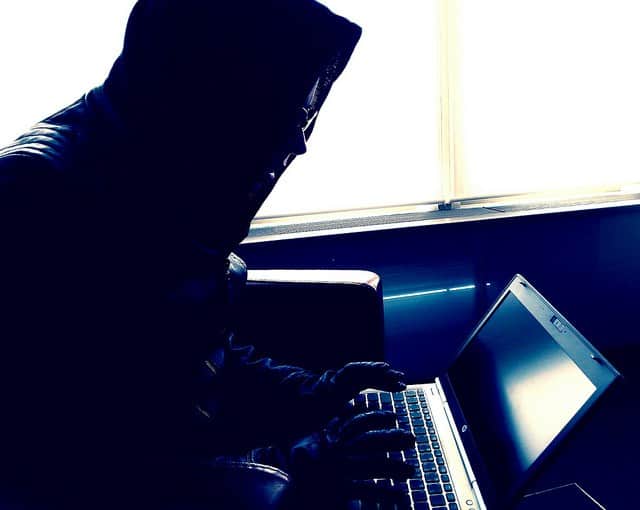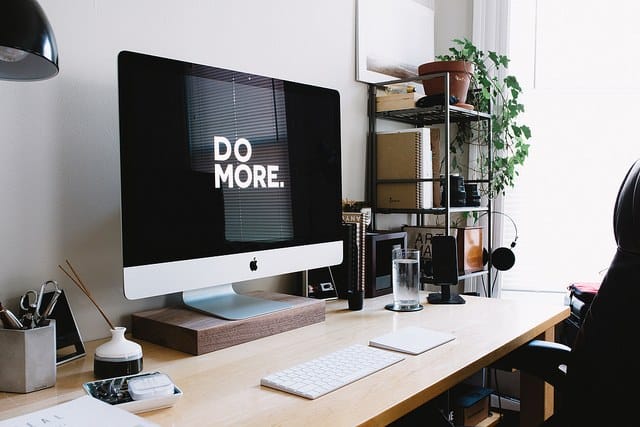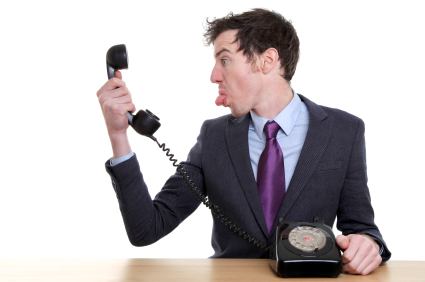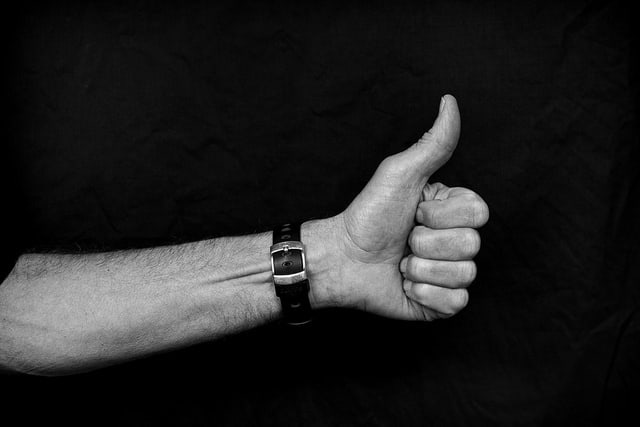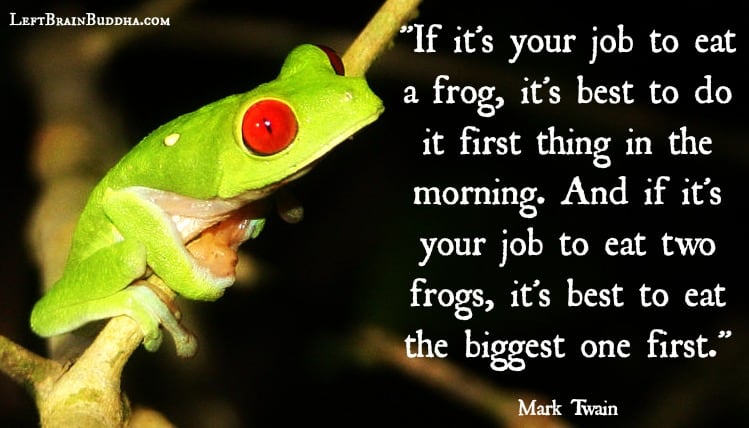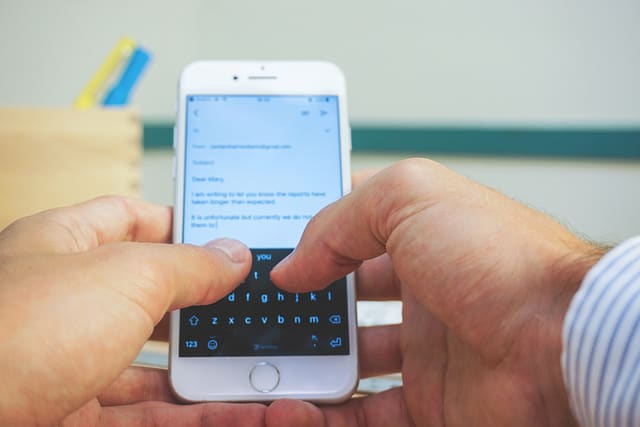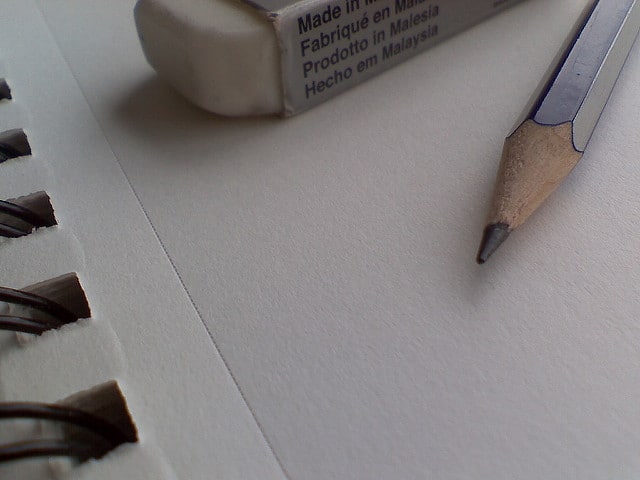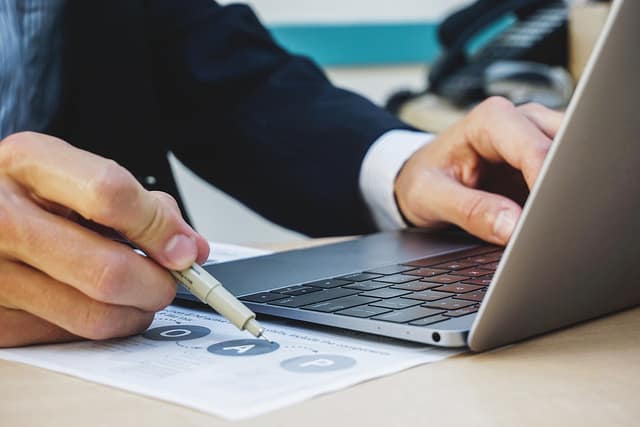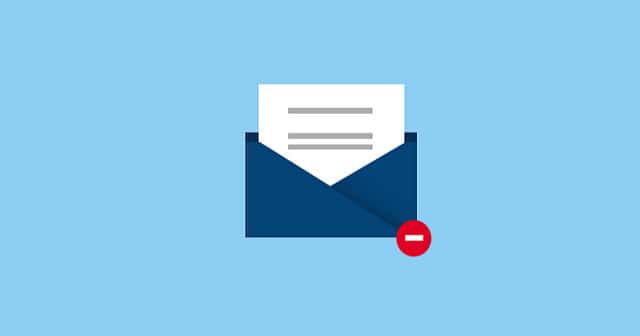Did you know that the average person spends 28% of their work day on email? That’s about 650 HOURS every year reading and responding to online correspondence. Add that up, and you’ve got the equivalent of a February just handling emails. Yikes. Let’s not be average. Don’t let your inbox turn into a jungle of overgrown threads about completed or no-longer-relevant projects. Hack through old unread emails, spam, and unsubscribe already! Once you focus on email productivity, you’ll be able to focus on actionable items. The following small business advice will help you get to inbox zero and stay on top of email productivity.
For better email productivity, you have to get a handle on two strategies.
- Send and receive emails that are brief and take up appropriate amounts of time in relation to your workload.
- Hack through the vines of your inbox jungle and enhance email productivity.
Tips for a Solid Foundation for Email Productivity
Start by laying the foundation with good email habits. If email productivity is your goal, you’ll need to change the way that you send, receive, respond to, and organize your emails. It sounds tough to overhaul everything, I know. But if you’re consistently using the following techniques, you’ll be able to cut your overall time spent looking through your inbox.
Write Searchable Subject Lines
Sometimes we don’t quite remember what we agreed to in an email contract, or what exactly was asked of us from a client. There’s a lot that gets said through email, and no one is perfect. That’s when we start hacking through that email jungle. “When did we agree to that?” “He said we agreed to X, but I just know it was something else!” Keeping track of your correspondence doesn’t have to be like finding a needle in a haystack. However, it will feel like it if you frequently write bland, non-descriptive subject lines like “work,” “project” or “hello.”
Subject lines are there for a reason. Take the time to type what specific project the email pertains to. Relevant titles are a must. This way, you can browse through your email history and know what issue is being worked on without even having to click through and read it.
It only takes a moment to write a proper subject line, but neglecting to do so can cost a substantial amount of time when you’re hoping to refer to that information later on down the line. Think about your future self. A little effort now is an investment in your time later.
Stick to Proper Email Etiquette
If you’re a current customer or you’ve been reading this blog for a while, you’re already familiar with email etiquette. In fact, if you’ve already subscribed to our blog, you’re probably learning a lot of different tips to improve your small business and tools to increase efficiency. Go you! If you haven’t already read that post, I suggest you head that way after finishing this one. Good etiquette doesn’t mean you must sacrifice efficiency.
A few things to keep in mind regarding email etiquette that will increase email productivity:
- CC everyone who needs to see it. Leaving someone out of the loop bad etiquette, yes. But, even worse, it will result in too many email threads and a complicated communications mess if you don’t include every person necessary.
- Don’t waste peoples’ time. If you’re sending out an introduction message, it’s polite to let them know who you are and where you found their contact information. But, keep it light and simple. Don’t make them read the equivalent of War and Peace on their laptop. Proofread, and edit, edit, edit! Brief emails are more considerate and more effective. After all, if you’re looking to spend less time on emails to improve time management, it’s likely they would like to do the same.
- Compress your files. This is easier to download on their end and helps keep things organized on your end. In most cases, compressing files into a single zip folder will take a few seconds—but the effort will be worth it.
Write Clearly and Succinctly
We’re serious about that tip: don’t write a novel. Be honest, how many of us were able to get through all of War and Peace. Today’s productivity gurus are all about being succinct. Tim Ferriss, bestselling author of The 4-Hour Workweek, advocates sticking to five lines per reply or fewer. If you can’t fit all of the information you need into five lines or fewer, perhaps you need to schedule a phone call or a meeting instead.
Clarity is also important for readability. Giving your emails a once-(or twice…or three times, depending on your skill level in writing) over before sending is so important. We just can’t stress it enough! If you leave blocks of text in your emails that are unclear, the recipient will need to take significantly more time to piece together and digest what you’re trying to get across. That could result in more of your time being used up, because you have to explain the same bits of information repeatedly.
Instead, break it up! Use many paragraphs and use direct call-to-action sentences at the end of your message. Read your email aloud before sending it off to check for clarity of your message. If you trip up, add words or use a different word, it’s a sign that your email isn’t written as clearly as it could. Edit before you send. Your email pals will thank you for it.
Unsubscribe
Do you really need coupons from all of your favorite retail outlets directly to your main inbox? Should it be that easy for marketers to get your attention that often? Do you need a weekly email from every app you’ve ever signed up for on your smartphone? We don’t think so.
Opt out of all of the unnecessary emails. Turn email notifications off from your apps. If couponing is a habit and if you want it, you grab it, try having a separate email address just for marketing emails. That way, you’ll be able to keep all those types of emails together and it won’t distract you from your everyday work.
Consider if Email is the Right form of Communication
Just because someone asked you a simple question via email doesn’t mean that you have a simple answer for them. There are many times you could more quickly give the answer over the phone. In this case, it’ll be more time efficient to send a brief email offering times that you’re available for a quick call. Sometimes businesses that need an answering service filter all communication through email instead of making the commitment to hire a good receptionist. This is inefficient for a small business owner, and we don’t recommend it! A receptionist is important and you should contact an answering service instead of slowing down your business.
Don’t forget the FAQs
If you’re getting a lot of emails asking a similar question, it’s a good idea to create a frequently asked questions page on your website. Sure, you’ll likely still get those questions in your inbox. But, a few people will take the extra step to find the information on your website before contacting you. Those are a few people that won’t send you an extra email. Sounds like a win to us.
Set the Tone
Some of the aforementioned tips thus far may or may not feel like time saving techniques to you. You might be unsure how taking the extra step of compressing your files for your recipient will mean higher email productivity for you. But keep in mind, the way you send and reply to emails sets the tone for what others should respond back to you. Set the example, and the person on the other end is more likely to be just as considerate of your time.
Email Productivity Hacks: Inbox Zero
Now that you’ve set the tone for sending and receiving succinct emails, you can expect that going forward you’ll receive emails that will allow you to get through your inbox more quickly. But what about the inbox you already have? How can you get down to inbox zero and start fresh?
Create Habits that Suit You
There are many different ways to deal with what most describe as daunting. Some take the “Eat the frog” approach. This stems from a famous quote from Mark Twain:
If the metaphor is lost on you, I’ll sum it up: get the worst stuff over with first! Many people feel like this is the way to create a win at the start of the day.
In my opinion, if email is your frog, I would take some time before eating it. Hear me out. Emails are almost always filled with asks and tasks. If there’s anything you know you already need to have done, you should begin with that. Otherwise, you’ll be answering to the latest needs of everyone else instead of tending to the projects that are already pending.
The best time to check your email is up to you, and it’s determined by how email relates to your output. You can choose certain hours that you know you’ll always be unavailable for email, or choose certain times for checking email.
Whether you check your email at the start of the day, or wait until noon to do so, it’s best to single-task it and move on. Don’t constantly check your email or let it act as a slot machine.
Batching Your Email
The first step to productivity is doing deep work. You cannot expect to finish a grueling task quickly if you’re multitasking it with scrolling Facebook, Reddit, Instagram, Snapchat…or whatever your online distraction of choice is. Discipline yourself to focus on only emails for a predetermined amount of time. This will allow you to complete the task more quickly and efficiently. You may find that the more you make a practice out of spending focused time doing a task, the longer you can do it the next time. Think of focus and discipline like a muscle, and stretch it!
Try taking ten minutes in the morning and ten minutes in the afternoon strictly for handling email. It can have a dramatic impact on your productivity.
Use tools for Email Productivity
Although doing your email in batches is great for email productivity, it’s not enough to ensure that your email time will be efficient. Here are a few tools for faster communication:
- Use plug-ins and website restricting apps. The StayFocusd plug-in for your Chrome browser is great for limiting the amount of time you spend on distracting websites, and it also has the ability to fully block all but specified sites for a determined amount of time. Freedom app works the same way. This will help ease you into single-tasking working on your emails.
- Schedule your emails if you need to send one later. Use Boomerang Gmail, for example, and you can send a lunchtime email even if you’re batching all of your email activities at 8:00 a.m. This is an invaluable tool for making sure your email is up and running all day, even if you aren’t always checking it.
- Set alerts for “email away time.” When you batch your email, it’s crucial that you spend time not checking email. This gives you time to focus on other projects throughout the day. What if you have an emergency, you ask? Use Away Find to keep you alerted on those emails you’re counting on. The result is you can depart the inbox for extended periods of time and still know you’re not missing out on anything.
Once you adopt these tools and the “batching” system, you’ll no longer be a slave to the inbox. Get your email done in a few minutes so you can spend 100% of other blocks of your time tackling other projects.
Get Away from Your Email
The point of all of these tools and tips? Making it possible to get away from your inbox.
There is a distraction cost built into each task that takes away from your current project. If someone pops into your office for a 5-minute pow-wow, they’re not just taking away 5 minutes of your time. They’re also taking the time required to get back into the flow which you’d already established. This has been called the cost of task switching.
No wonder the average person spends about 28% of their work life—equal to a good month of work—simply emailing. Those distractions add up quickly. The key to eliminate this is not to cut people off or become curt and rude. The key is to prevent distractions as much as possible. Before they happen.
The fastest method is to disable auto-refresh on your email client on your phone and disabling pop-up notifications or badges for the email app. Then, get away from your email with the tips listed above. If you understand why you need to make productive time a priority over email time, you’ll then take the necessary steps to batch your email effectively.
Maintaining your Inbox for Email Productivity
Now that you’re sending effective emails and spending emailing time effectively, we now move to the final phase: inbox maintenance.
Just as there are associated costs of distractions, an inbox of 1,000 emails can weigh on you more than you know. The key, again, is prevention—but in this section, we’ll also talk about cleaning up so you can get back to the prevention stage.
Don’t let emails sit
The biggest source of confusion for those with large inboxes? The inbox itself. Your email software gives you the ability to either sort emails into categories or delete them. The next time you receive an email, don’t let it sit. Either categorize it in an actionable folder, or delete it. If it’s not worth organizing, it’s not worth saving.
Don’t use your inbox as a to-do list. Many people look at their email as a list of actionable steps. I suggest creating a separate to do list. An inbox isn’t meant to be a to do list, after all!
Use Categories and Folders
One of the best ways to increase email productivity is to use folders. You can create folders that are separated by client, project or subject matter. It really depends on how you will find it easiest to navigate. You can then stop using your inbox as storage space.
Block and unsubscribe regularly
It was mentioned earlier that you should unsubscribe from unnecessary emails. But, that can’t always be done in one fail swoop. Most of us have signed up for so many things or given out our email so freely that we don’t even know all of the people and businesses that have access to our attention span through our email.
As a part of email inbox maintenance, you’ll have to go through and unsubscribe all of the random emails you don’t need. If it’s a great small business blog from an answering service emailing you, I’d say, keep it! But you won’t be needing to know every sale that happens from the evening dress store. That won’t add the same level of value.
So, when you are batching your emails, go through and either block the spam or unsubscribe from those newsletters you never read. These are intrusions on your time. They’re distractions—and as we know from previous sections, the weight of a distraction is more than the content of the distraction itself. Don’t forget about blocking spammers, either, which will make your life a lot easier for you and other people who use your email client.
If you only do these things, you’ll be on the road to a clean inbox. But if you have a veritable jungle of emails still lingering in your inbox, you might need a bit of a boost in the right direction—just to get you starter.
For that, there’s Mailstrom.co. This service, which integrates with Yahoo, Google, and Outlook, allows you to easily sort through your emails for quick deleting. If you were hacking through your email jungle with a hatchet, this is like taking a chainsaw with you instead.
Apply this to your small business…
To increase production and probability for success as a small business, organization is important. That applies to your paperwork, onboarding procedures and training employees, disaster recovery planning, and your email inbox. When your’e at inbox zero, it’s like a weight is lifted off of your shoulders. That feeling is worth its weight in gold.
Now try this: build a new email routine
Let’s say that you’ve taken many of these tips to heart. You’re well on your way to become an email ninja. You want to de-clutter your inbox and be a ruthlessly efficient emailing machine.What does that look like?
Let’s construct a routine that will help you out:
- Decide when your email-checking will occur. Set a schedule that is appropriate to your in-email and out-of-email workload.
- When the time comes, set a timer. Depending on the type of work you do, ten minutes may be enough time. For others, thirty may be more suitable. After the designated time, steer clear of email until the next designated time.
- Spend non-email time getting ahead on tasks that are outside of your inbox.
- Check your email at the next designated time.
- If you don’t have any new email to read, congratulations! Spend the time organizing existing emails with folders. Don’t expect to change everything overnight. Take it step by step to make it to inbox zero.
- If you do have new email, congratulations! Now apply what you’ve learned about email productivity. Reply to anything that’s pressing with short, succinct messages—five lines or fewer. If there are any to do items, delete the email and take any notes from it into a calendar like Google Calendar. This will ensure that nothing gets lost, but that your inbox doesn’t balloon, either.
- Schedule any relevant emails to be sent later in the day if necessary.
- Remember to CC anyone who might be relevant to your discussions.
What’s next?
After that, you should be able to look through your inbox and see that it’s slightly smaller than it was the day before, not bigger. Over time, these habits will not only give you a better handle over your email—but your work life in general. Just remember us when you’re an email productivity star, okay?
For extra credit, you can sign up to any of the tools you saw in this article and have at it. This will give you everything you need to start blasting through that cluttered inbox and maintain the good email habits that make productivity possible.

